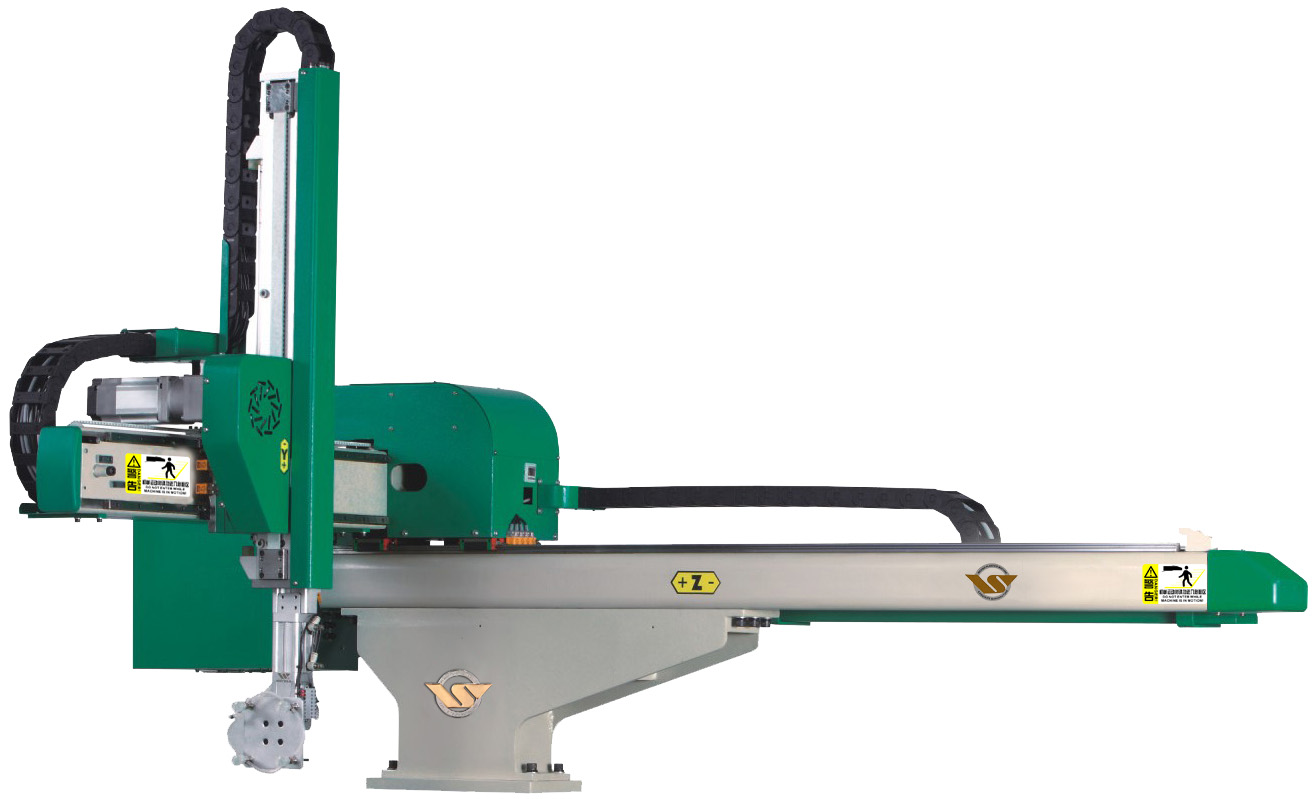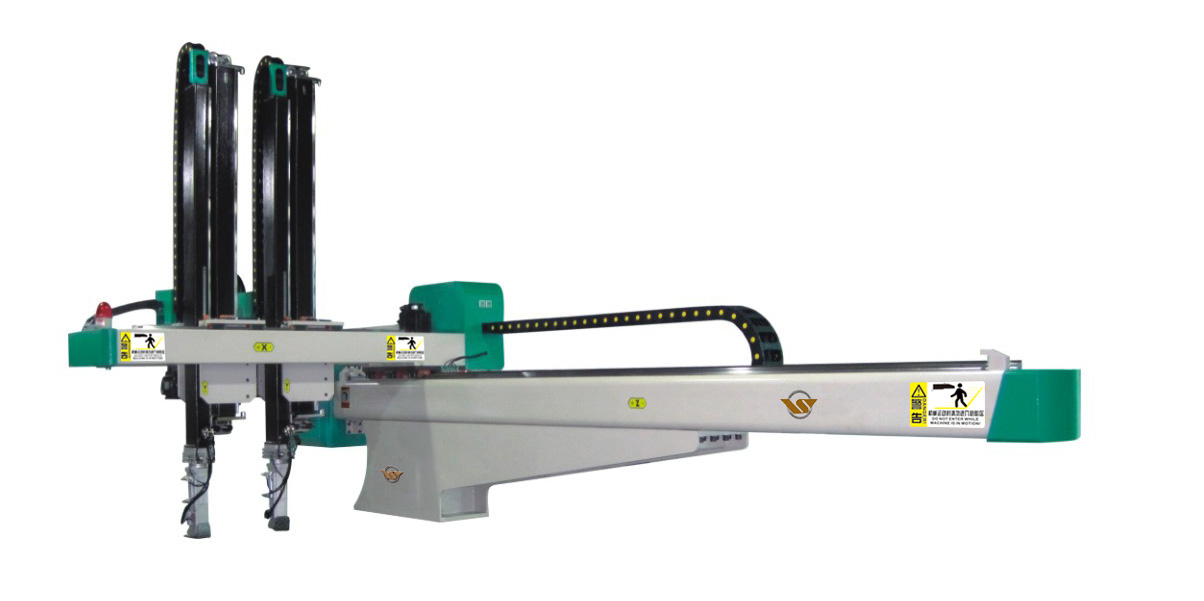What is the difference between the three-axis and five-axis injection molding robots arm?
2023-12-08 Page view:
In the realm of injection molding manipulators, discussions often revolve around different axes and servo configurations. So, how do we distinguish between three-axis and five-axis manipulators robot arm?
Three-axis Robot Arm:

Most three-axis manipulators feature a single arm, with double arms being a special order exception. They all have a double-sectioned structure. The double-sectioned arm structure incorporates imported pneumatic components, ensuring durability and applying a dual-speed mechanism. This enhances the arm's speed and reduces extraction time. The extraction and retrieval arms, constructed from high-strength aluminum and precision linear slide rails, are lightweight, rigid, and exhibit low friction, enhancing the manipulator's durability.
Its advantages include:
1:Enhanced work efficiency: The three-axis injection molding machine manipulator operates as an intelligent mechanical device with various action operation instructions.
It mimics various manual actions with high accuracy, efficiently handling extensive tasks, especially short-cycle ones, increasing output, and ensuring timely completion.
2:Labor cost savings: Primarily designed to reduce manual work, employing a manipulator significantly decreases manual labor, saving on labor costs.
It efficiently handles various gravity tasks and repetitive stacking operations.
3:Reduced engineering accidents: Mechanized work processes often pose certain risks, yet the operation of the three-axis injection molding machine manipulator follows program
instructions, standardizing actions. It exhibits adaptability, suitable for diverse working environments, including oily, high-temperature, or corrosive conditions.
However, like any product, three-axis manipulators have limitations. The single-arm structure restricts its capabilities. Its point control aspect is relatively standard,
utilizing pneumatics or motors to drive mechanical components for object manipulation, slightly lacking in power. There are a total of 3 servo motors controlling 3 axes.
For instance, in 5 axes: 1 servo motor handles horizontal movement, 1 axis; 2 motors manage the main arm: 1 for lifting and 1 for pulling; 2 motors operate the auxiliary arm:
1 for lifting and 1 for pulling. The absence of the 3rd axis is due to the lack of a jib, resulting in 2 fewer motors.
Furthermore, even large-tonnage manipulators with only a main arm operate as 5-axis systems.
This is primarily due to the replacement of the clamp reversing cylinder at the work head with a servo motor and the addition of a clamp rotation motor.
Five-axis Robot Arm:

Compared to three-axis manipulators, five-axis manipulators are more versatile. They share similar functions to three axes and feature a consistently double-armed series.
Additionally, the five-axis manipulator operates entirely as a servo-based system. What defines a "servo" robot? Servo-driven, it operates purely on electricity.
While three-axis systems use both pneumatic and electric power, they are not entirely "servo".
The complete range of five-axis injection molding manipulators operates as fully electric servo systems, providing sufficient power compared to three-axis setups.
1:During regular injection molding production, products are extracted using a five-axis servo manipulator.
With fixed injection molding machine cycles, it ensures excellent product stability, guaranteeing quality.
2:The five-axis servo manipulator integrates a safety protection system, minimizing the risk of employee accidents, enabling operators to use it securely and advance factory tasks steadily.
3:Each five-axis servo manipulator is assigned to one dedicated person for more efficient management.
Staff members gain comprehensive knowledge of the machine they oversee, performing timely inspections and maintenance.
They become familiar with the machine's operating status and output, fostering perfect human-machine cooperation and making the five-axis servo manipulator an excellent factory operation partner.
However, the five-axis servo manipulator also has drawbacks. Being entirely electric-driven, a sudden power outage can halt operations,
leading to significantly reduced production speed, presenting a distinct disadvantage.



